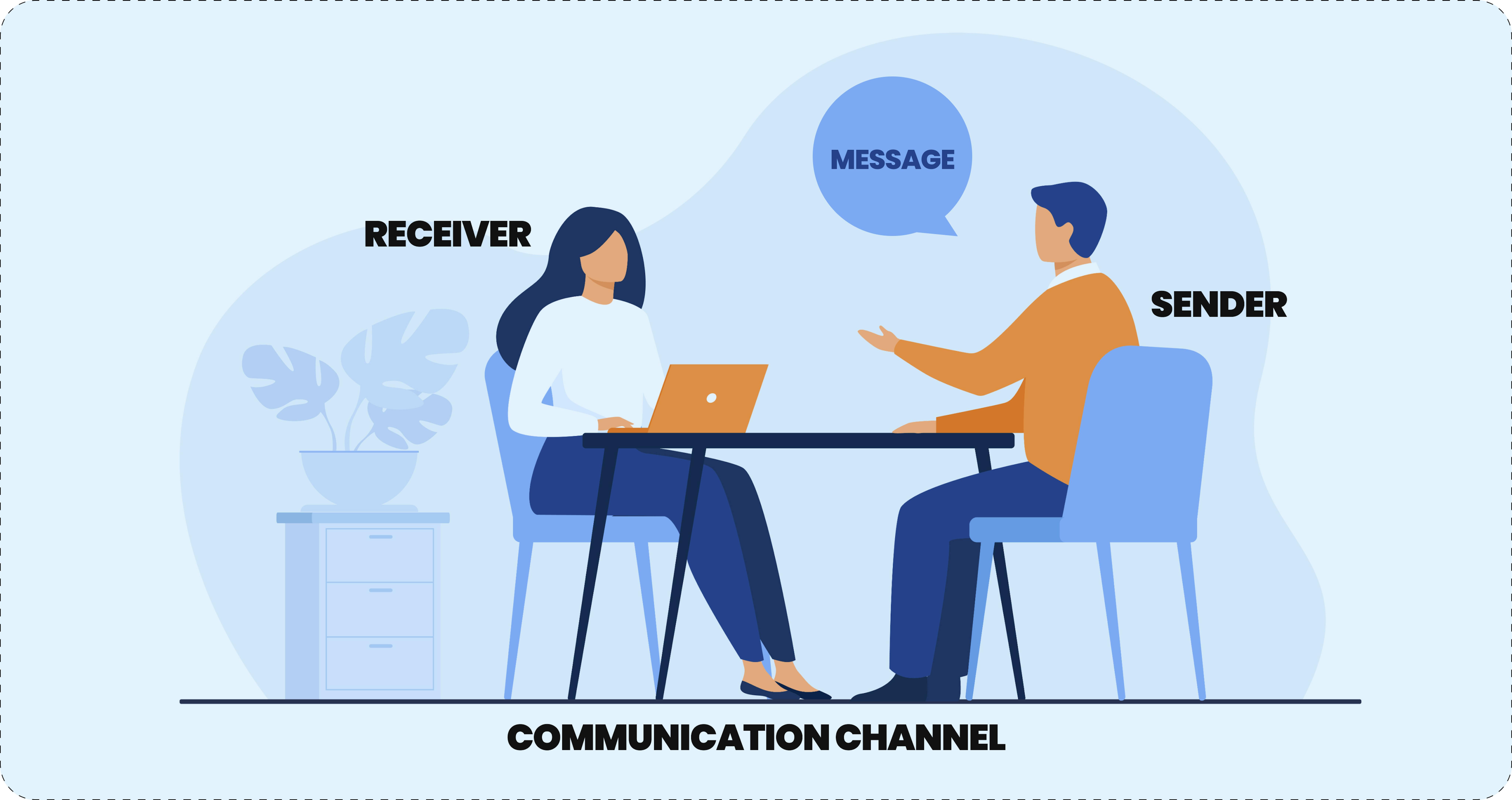For the purposes of this article, feedback is understood as communication between colleagues.
Feedback communication elements
Feedback involves these communication elements:
Sender. The person who initiates the communication, broadcasts their intentions
Message. An artifact of communication that has a particular form, contains an intention
Communication channel. A method and space for broadcasting a message
Receiver. The person who the message is intended for, who reacts to the message

Feedback can be given on: a product, situation, or service, as well as on an individual's personality and actions.
The sender could be:
- current or potential clients – stakeholders
- investors, donors, and partners – shareholders
- colleagues, employees, and managers – innternal stuff
Feedback lifecycle
The main stages of the feedback lifecycle are the following:
- Observation
- Opinion formation
- Goal determination
- Feedback delivery
- Work on improvements
Observation. This stage involves observing for compliance of processes within a company, displays of hard and soft skills, and personal qualities.
Opinion formation. When forming an opinion of someone, it's important to separate yourself from the context and focus on actual data and objective facts.
Goal determination. Gather expectations from team members, managers, and other stakeholders to determine common goals.
Feedback delivery. Remember that feedback is sometimes unpleasant and may not always be communicated properly if certain steps of the process are missing or ignored.
| SIGNS the receiver accepts feedback: | SIGNS of the receiver DOESN'T accepts feedback: |
|---|---|
|
|
Therefore, it is important to understand:
a. If the receiver doesn't accept the feedback, and there was no meeting, then there's no reason to continue communication.
b. The sender holds responsibility for making the communication goals clear and broadcasting them.
c. If the receiver accepts the feedback, we can move to the most rewarding part: growth.
Work on improvements. Only indicating someone's successes and failures is not enough. The Receiver may not know how to do something differently. However, understanding WHAT to improve makes it possible to create a personal development plan, follow it, and measure its progress.
Instead of conclusion
Feedback requires thoughtfulness, patience, a sincere desire to help someone, discipline, mindfulness, and maturity.
Despite this skill's complexity, it's essential for our development. By forming an opinion based on facts, we validate them with reality, and by finding ways to improve, we make growth possible. We help others see a way to progress while changing ourselves and our environment.









